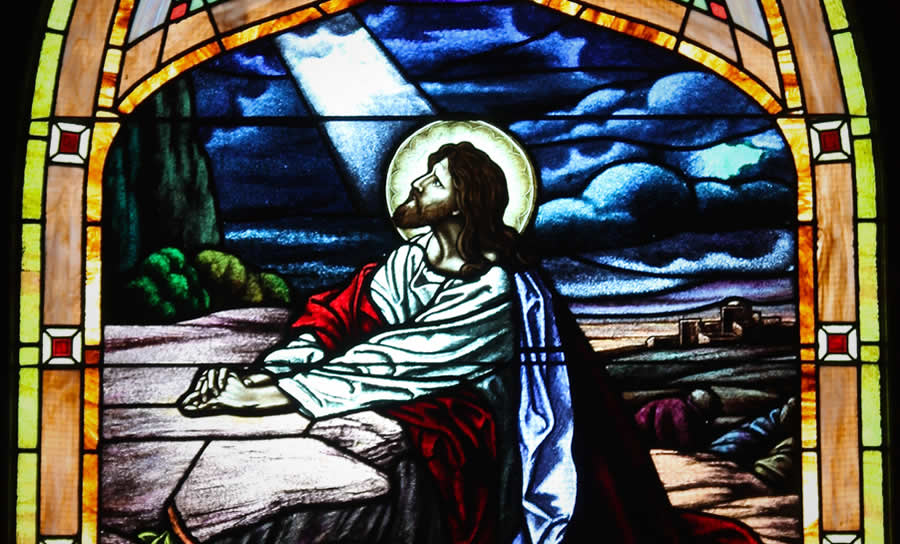Gethsemane: Jesus’s Soul Crushed With Grief

Every spring, Christians around the world celebrate Palm Sunday, the day Jesus arrived in Jerusalem on the back of a young donkey and received enthusiastic praise as the Jews’ long-awaited messianic ruler. But that day didn’t mark the start of an earthly, political reign. Instead, it began the final week of a life that would end on a cross outside the city’s walls.
The turning point of that week for Jesus came on the evening before his death as he prayed in a garden called Gethsemane. In the midst of severe personal agony, the son of a carpenter from Nazareth confronted and accepted his destiny.
In doing so, Jesus experienced the spectrum of anguish with an intensity that overwhelms normal human turmoil. By doing so, he solidified his claims as the absolute intercessor between Heaven and Earth.
Gethsemane represents Jesus’ ultimate identification with the humanity he came to rescue.
In the Crucible
Throughout his ministry, as the Gospels attest, Jesus keenly understood the ordeal he must endure as the ultimate sacrifice for sin. When Peter, after proclaiming him as Messiah, privately contradicted the idea that Jesus would have to die to fulfill his mission, the carpenter’s son exclaimed angrily, “Get behind me, Satan!”
Was Jesus talking to Peter? Was he talking to supernatural, diabolical elements coming against him? Or was he talking to the turbulence raging within himself?
Luke records another incident in which Jesus, referring to his crucifixion, tells his disciples, “I have a terrible baptism of suffering ahead of me, and I am under a heavy burden until it is accomplished.”
“My Father! If it is possible, let this cup of suffering be taken from me,” Jesus prayed. “Yet I want your will, not mine.”
At Gethsemane, Jesus felt the full impact of that burden with the force of a billion sledgehammers.
“My soul is crushed with grief to the point of death,” Jesus told Peter, James and John — his three closest disciples — as he asked them to pray with him. After walking a few more paces to be by himself, the carpenter’s son fell on his face and gave full vent to his profound pain.
“My Father! If it is possible, let this cup of suffering be taken from me,” Jesus prayed. “Yet I want your will, not mine.”
In those few words, Jesus simply yet eloquently revealed his humanity.
The carpenter’s son not only expressed the profound fear of death that grips every human being, a fear amplified by the torture and the isolation from God he knew he would soon endure. He also experienced the fundamental tension between self-preservation and deference to God.
Beyond Agony
Jesus’ agony was so intense “that his sweat fell to the ground like great drops of blood,” the physician Luke wrote. Doctors describe the condition as hematohidrosis or hematidrosis, which is rare but can occur under extreme stress, such as while facing death or experiencing torture. Regardless of whether Luke meant to be literal or figurative, however, the meaning is obvious.
Unwittingly, Jesus’s closest disciples contributed to that anguish.
Three times, Jesus took a break from praying to check on Peter, James and John. Three times, he found them asleep.
“Couldn’t you stay awake and watch with me even one hour?” Jesus asked with apparent exasperation. For perhaps the first time, and certainly not the last over the course of the next several hours, the carpenter’s son would be utterly alone.
Closing the Circle
In its own way, Gethsemane culminates Jesus’ ministry, just as his temptation in the desert for 40 days began it. In both cases, as someone without sin, Jesus had to experience the spectrum of human turmoil so he could identify fully with human nature.
In the desert, Jesus made three momentous choices. By refusing Satan’s suggestion to turn stones into bread, Jesus rejected immediate material gratification. By refusing Satan’s suggestion to jump off the Temple, Jesus rejected abusing God’s name for personal motives. By refusing to worship Satan so he could rule the world, Jesus rejected sacrificing his integrity for raw power.
All three temptations have plagued humanity from its earliest days, and still do so.
Fully Qualified
Taken together, Jesus’ experiences in the desert and Gethsemane provide an exquisite facet to the role he embraced after his ascension. As Paul wrote in his letter to the Hebrews:
“Since he has gone through suffering and temptation, he is able to help us when we are being tempted. …That is why we have a great high priest who has gone to Heaven. …This high priest understands our weaknesses, for he faced all of the same temptations we do, yet he did not sin. So let us come boldly to the throne of our gracious God. There we will receive his mercy, and we will find grace to help us when we need it.”
Joseph D’Hippolito has written commentaries for such outlets as the Jerusalem Post, the American Thinker and Front Page Magazine. He works as a free-lance writer.


